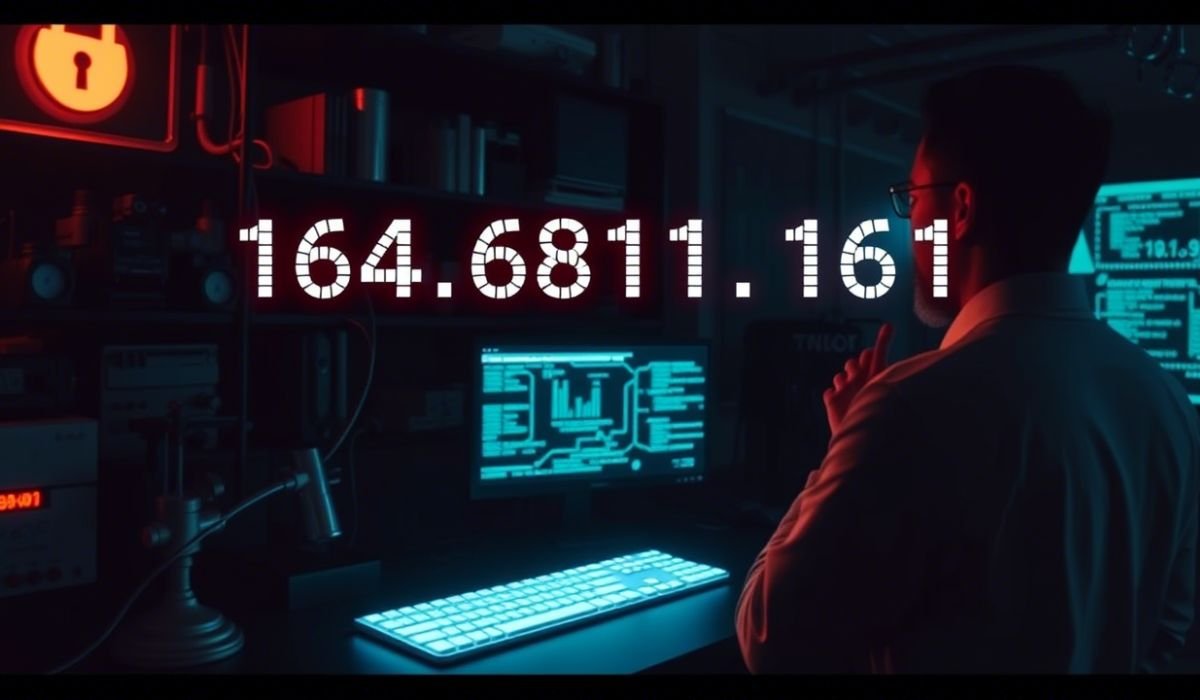Have you ever stumbled upon a sequence like 164.68111.161 and felt a strange curiosity? It looks important—structured, precise, and perhaps even secretive. Is it part of a digital system? A code with hidden meaning? Or just a random number with no real significance?
This article takes a deep dive into the possible origins, uses, and interpretations of 164.68111.161. From networking and cybersecurity to scientific research and industrial systems, we’ll explore every possible angle to uncover what this mysterious number might really mean.
What Is 164.68111.161?
At first glance, 164.68111.161 seems like a formatted identifier. Numbers like this are often used across various fields, including information technology, data security, product manufacturing, and engineering.
But here’s the twist: the number doesn’t immediately fit into any standard format. It’s not a common IP address, nor does it match widely recognized software versioning schemes. That’s what makes it so intriguing—and worth investigating.
Is It an IP Address?
A logical first guess is to consider it an IPv4 address, which is made up of four numbers (called octets) separated by periods. Each number must be between 0 and 255.
Let’s analyze:
-
164✅ (Valid) -
68111❌ (Invalid – exceeds 255) -
161✅ (Valid)
Clearly, 68111 is far beyond the range of an IP segment, which disqualifies it from being a valid IP address under current internet protocols. That means it’s not part of the public IP address space.
Could It Be Used Internally?
Some companies do create internal systems with custom number formats, especially for virtual machines, sandbox environments, or proprietary software. In that case, this number could be a non-standard reference used for private networking or testing.
Could It Be a Software Version or Build Number?
Software developers often use structured numerical formats to label updates and builds. These usually follow a semantic versioning pattern like X.Y.Z, where:
-
X = major release
-
Y = minor feature update
-
Z = bug fix or patch
But some internal builds or firmware updates use extended or unique versioning like:
-
2023.04.01.5611 -
164.68111.161
It’s possible that 164.68111.161 is a proprietary version number from a specific platform, especially in large enterprise systems. Without access to a changelog or product documentation, however, this remains speculative.
Could It Be a Product or Model Number?
Manufacturers, particularly in electronics, automotive, and industrial machinery, use long numeric codes to:
-
Identify product series
-
Track batch manufacturing
-
Specify regional versions or variants
For example:
-
Bosch:
0 281 001 161 -
Samsung:
SM-G998B/DS -
Intel:
BX807151212500
A number like 164.68111.161 could be a model or serial number, especially for complex equipment like routers, medical devices, or lab instruments. These identifiers help with inventory control, warranty management, and servicing.
Is There a Cryptographic or Security Connection?
In cybersecurity, structured numeric strings often play a role in encryption algorithms, hash functions, or security keys. While most cryptographic elements are longer and more randomized, some identifiers are derived from numeric components.
Possibilities include:
-
Hash fragments or signatures
-
Encrypted data references
-
Private authentication tokens
Although 164.68111.161 doesn’t resemble a full hash (like SHA-256), it could be a partial reference or checksum, used internally to validate data integrity or access permissions.
Could It Be a Scientific or Engineering Measurement?
Engineers and researchers frequently deal with structured data values, including coordinates, frequencies, calibration standards, or measurement references.
Here are a few relevant use cases:
-
Astronomy – coordinates of a celestial body
-
Telecommunications – frequency bands or signal identifiers
-
Physics – measurement data or equipment calibration values
While this number isn’t recognized as a known scientific constant, its format resembles codes used in technical documentation or research archives.
Popular Theories About 164.68111.161
Mysterious numbers like this always invite speculation. Let’s look at some of the most common theories circulating online and in tech forums:
-
Server or Access Point – It might be a disguised reference to a restricted network node.
-
Experimental Test Code – Developers sometimes leave codes like this in databases or logs during QA or sandbox testing.
-
Part of a Puzzle or ARG – Alternate reality games (ARGs) or developer Easter eggs have used cryptic numbers to lead users down rabbit holes.
-
Archived System Identifier – Could be a legacy code used in an older software or database system.
Real-World Use Cases for Numbers Like This
Even if we don’t have a definitive origin, here are plausible real-world applications for a structured number like 164.68111.161:
| Use Case | Description |
|---|---|
| Internal IT Systems | Custom reference IDs for internal databases or test environments |
| Product Tracking | Batch ID or model code used by manufacturers |
| Encryption & Security | Key segment or identifier used in digital signatures |
| Scientific Research | Calibration or measurement reference |
| Server & Device Logs | Event codes used in system logging tools |
How to Research Unknown Numbers Like This
If you encounter a number that seems meaningful but unfamiliar, here’s how to track it down:
-
Google it exactly (with quotes:
"164.68111.161"). -
Check tech forums like Stack Overflow, Reddit, or GitHub issues.
-
Use WHOIS/IP lookup tools in case it’s part of an internal server reference.
-
Search manufacturer or software vendor databases using part of the number.
-
Ask communities in relevant fields (e.g., networking, cryptography, embedded systems).
The more context you have (where it was found, what you were doing), the better chance you’ll decode its purpose.
Bottom Line: Why It Matters
While 164.68111.161 may not belong to any publicly known system, its structure hints at an intentional purpose. Whether it’s a software identifier, internal IP-like reference, or product code, it’s likely tied to a specific technical system or process.
In the digital age, numbers are more than digits—they’re tools of organization, identity, and security. And every once in a while, they spark just enough curiosity to take us down a fascinating path of discovery.
So next time you see a mysterious number like this, don’t ignore it—it might just unlock a piece of hidden digital history.
📌 FAQs About 164.68111.161
Q1. Is 164.68111.161 a valid IP address?
A: No, it’s not a valid IPv4 address. The segment “68111” exceeds the allowed range (0–255).
Q2. Could 164.68111.161 be part of a cryptographic system?
A: It’s possible. Structured numbers are used in security identifiers, encryption keys, and checksum verifications.
Q3. Is this number linked to a known product or device?
A: There’s no public reference to it as a commercial product, but it could be part of a proprietary or industrial system.
Q4. Could this number be used to track something?
A: Potentially. Companies often assign structured IDs for internal tracking of hardware, inventory, or research data.
Q5. How can I find out what a number like this means?
A: Use Google search, tech forums, WHOIS tools, or reach out to domain experts. Context (where you found it) is key.




